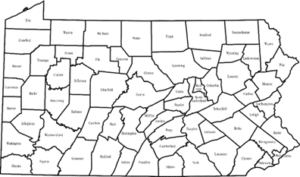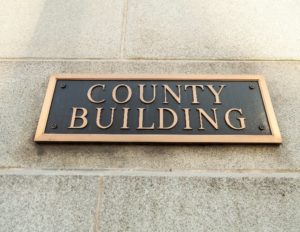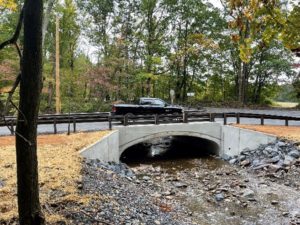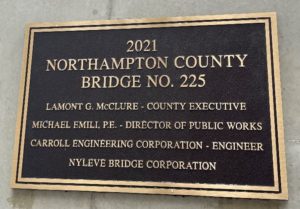

What is a County?

It’s no secret that the history of the United States of America can be seen as a prolonged struggle to define the roles and powers of our governments at the local, state, and federal levels. In the United States, there are over 89,000 local governmental units. There are other forms of local government too, such as municipalities, townships, and special purpose districts. With these exceptions, nearly everyone in the United States is represented by a county government. A county government is a subdivision of government that is organized by the state to help manage state affairs. A good analogy for a county is the property that a house sits on. It has clear geographical boundaries, and these boundaries always touch up against other properties. The homeowner is responsible for everything within the property lines. In the same way, a county government is responsible for everything within county limits. In this blog post, we will focus on county governments, how they work for the people, and how engineers help in the process!
What is County Government?
In Pennsylvania, there are 67 individual governmental units designated as counties. Counties are distinguished into different classes based on population. Philadelphia, for example, is a first-class county with a population of roughly 1.579 million people! Eighth-class counties such as Fulton and Potter have a lot fewer people within county limits. Pennsylvania is unique in that it is one of few states where the counties geographically overlap municipalities such as cities, boroughs, and townships. Therefore, Pennsylvanians are a resident of both their county and their municipality at the same time.
A county’s primary function is to administer state law at a local level. Every four years, the citizens within the county vote for three county commissioners. This board of commissioners represents the best interests of the citizens and oversees all county operations. Different counties have different elected officials depending on their class. Other elected officials include the controller, the treasurer, the coroner, the clerk of deeds, the sheriff the prothonotary, and the district attorney and jury commissioners, among other positions. Some counties near us at Carroll Engineering Corporation have adopted a “home rule” form of county government. The nearby counties of Northampton, Lehigh, and Delaware operate under “home rule” and have an elected county executive and an elected county council. Under home rule, authority over municipal matters is transferred from state laws to local charter that is drafted, adopted, and amended by voters within a municipality. Counties are required by law to provide certain services to their citizens and each county has a range of different functions.

What is the Role of a County Government?
As an agent of the state, county governments serve the community through elected officials who issue and enforce state laws, collect taxes, assess property, record public documents, conduct elections, and issue licenses. Appointed boards and officials work to provide parks, libraries, sewers, public assistance, emergency management, hospitals, and bridges to a county. In addition to administration, counties have rapidly moved into other areas of government support including social services, corrections, child protection, planning and zoning, economic development, stormwater management, waste management and water quality. Each county provides its own unique mix of a broad range of services.
provide parks, libraries, sewers, public assistance, emergency management, hospitals, and bridges to a county. In addition to administration, counties have rapidly moved into other areas of government support including social services, corrections, child protection, planning and zoning, economic development, stormwater management, waste management and water quality. Each county provides its own unique mix of a broad range of services.
How Engineers Work for Counties
With all the services required to maintain and operate a county, county officials will often appoint, elect, or hire a County Engineer to assist with civil engineering matters within their county lines. The County Engineer is responsible for advising and overseeing on county-owned infrastructure including maintenance, repair, widening, resurfacing, reconstruction, and construction of pavements, culverts, and bridges. A limited “home rule” county (such as Northampton, Lehigh, and Delaware) may have the option to hire an Independent Professional Engineer for certain tasks. The County Engineer may even participate in County and Regional Planning Commissions and provides tax map drafting services for the county. Additionally, they may provide geographic information system (GIS), mapping, and asset management services. A County Engineer may also provide guidance and expertise on various funding sources available to a county. In unincorporated areas, they may also be involved in the establishment and maintenance of petitioned and assessed ditches, sidewalks, and even county airports.


(Pictured Above: Northampton County Bridge No. 225)
We recognize how critical it is to provide expert engineering services to our local communities. With all the responsibilities of a County Engineer, we hope you now understand how they benefit your community, too! To read more about our work within counties and municipalities, check out our Municipal Engineering Services or visit www.carrollengineering.com.
If a county is planning new stormwater, bridge, road improvement, park, public works projects, etc. or have any general questions on how engineers serve counties, please contact Tom Gockowski, P.E., President of Carroll Engineering Corporation at tgockowski@carrollengineering.com or 215-343-5700 ext. 316.
Source: https://www.pacounties.org/PAsCounties/Pages/County-Information.aspx
